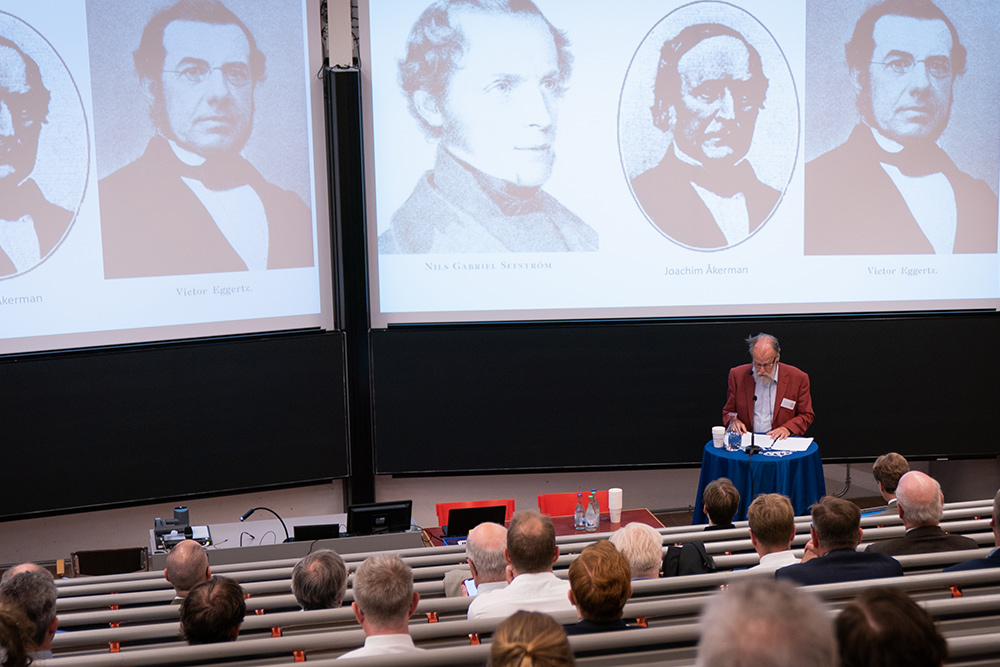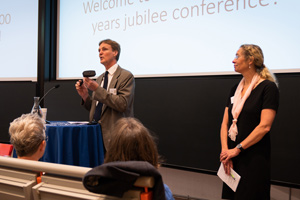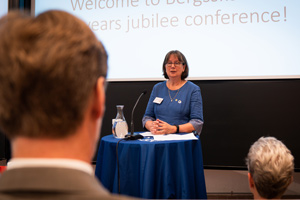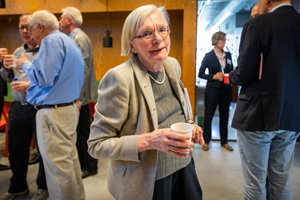Jubilee conference for Bergsskolan 200 years

Sweden's first higher civil technical education turns 200. Bergsskolan in Falun became the basis for both today's KTH and Materials Science and Engineering. To celebrate the anniversary this year has been named ”The Year of Materials” and a big jubilee conference was held in June at KTH.
200 years of tradition and innovation within Bergs were celebrated for two days, 17–18 June,with a little over 200 participants, 45 program highlights and speakers from Sweden, Finland, the USA, Germany, China and Japan.
Pär Jönsson, new Head of Schoolat ITM from 1 July this year, opened the conference with a gavel inherited from the old Bergsskolan.
What are you most happy about regarding the conference?

"The large participation. It was an opportunity to spread the positive aura around our educations and our research, and to show new ideas and new abilities."
KTH Materials Platform held its annual meeting among students, international guests and researchers at the conference. Several industrial companies were present and gave lectures.
"It is evident that the department of Materials Science has good contacts and collaboration with the industry," says Peter Samuelsson, co-organizer and guest teacher at KTH.
The first day was about research and education

Sigbritt Karlsson, President of KTH, welcomed the participants, and Annika Borgenstam, Head of Department, introduced the department's units.
Karin Röding, Director General of UHR*, noted that the founders of Bergsskolan would be pleased with the development, now that KTH is ranked as one of the world's top technology universities and Sweden is among the world's most innovative countries.
Anders Lundgren, Professor Emeritus in Uppsala, held a much-appreciated lecture on the school’s history.
The second day offered 36 lectures in three different halls
The themes were ”Process technology for reduced environmental impact”, ”Modeling of new alloys”, ”Circular economy" and ”Additive Manufacturing – material and application”.
AM – also known as 3D printing – and Powder metallurgy are areas where much is happening right now. Greta Lindwall and Christopher Hulme Smith talked about how they are being developed at KTH.
"Greta and Chris are our newest Assistant Professors, and now they are setting up this new area at the department", says Anders Tilliander, main organizer and new Head of Division for Process. "It was great that we could give a glimpse into the future."
More men than women

In his room, Head of School Pär Jönsson has a framed list of professors in ”Iron Metallurgy”, from Nils Gabriel Sefström in 1819 to himself. All 14 are men.
"I hope it doesn't look like this in two hundred years", he says.
The number of women in Materials Science has increased, but is still only 30 percent. This was a point raised by several lecturers, but less noticeable at the actual conference with as many female as male speakers.
Annika Borgenstam, Head of Department, is satisfied with the atmosphere of the two conference days.
"That it felt forward-looking was important to give new students a positive image of metallic materials."
Is that the purpose of the Year of Materials?
"Yes, the hope is that young people will understand that they can influence the environment by working with materials."
Text and translation from Swedish: Alexandra von Kern
*UHR = Universitets- och högskolerådet

